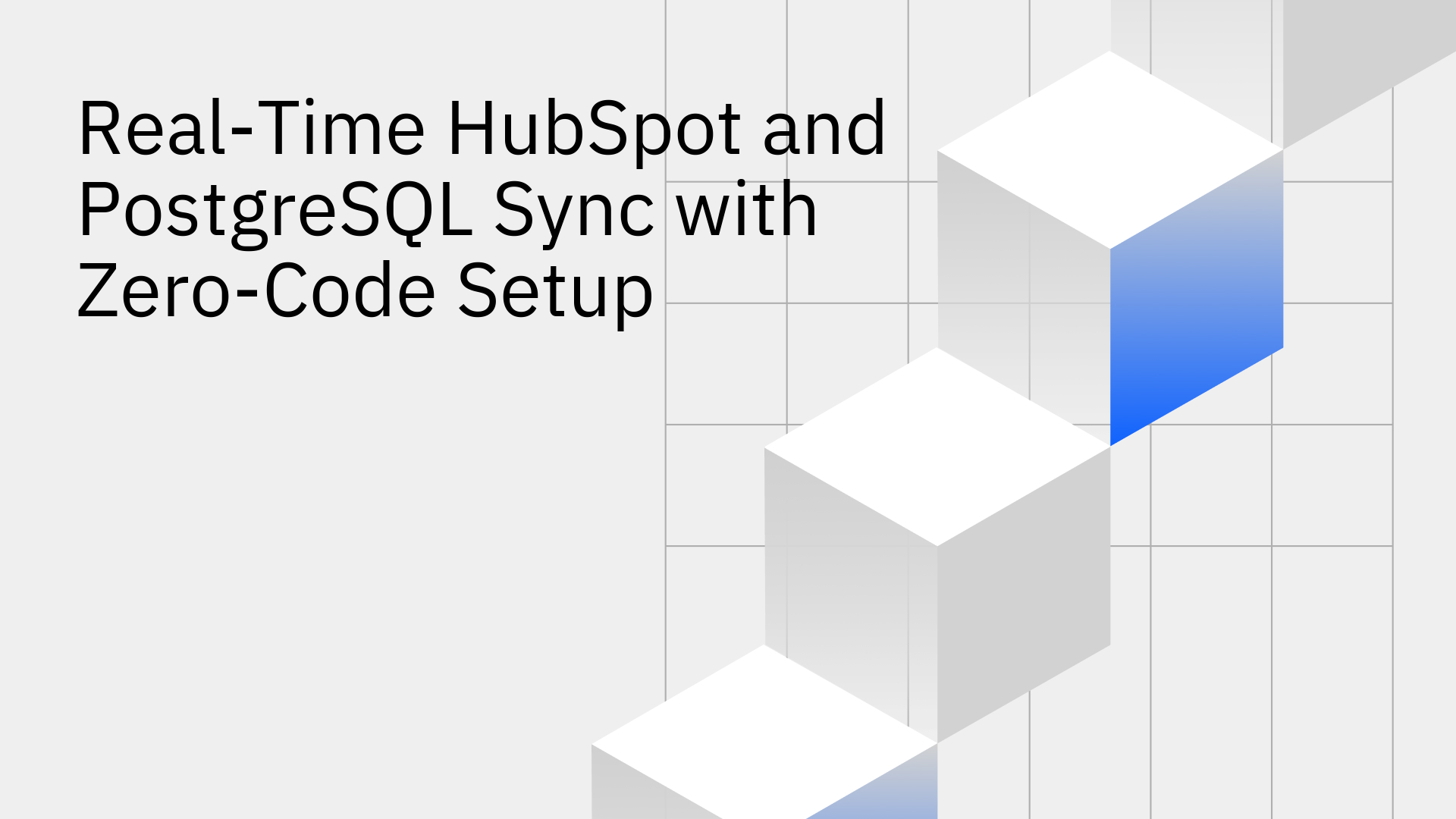
Connecting your Customer Relationship Management (CRM) platform like HubSpot with a powerful database like PostgreSQL is a game-changer for any modern business.
This Hubspot postgresql integration allows you to unlock advanced analytics, build custom tools for your teams, and create a single, unified view of your customer data. However, making this connection has traditionally been a major headache, often requiring complex coding, high maintenance costs, and a constant battle with technical API limitations.
Thankfully, there's a better way. Stacksync offers a modern, zero-code solution that enables real-time, two-way synchronization between HubSpot and PostgreSQL effortlessly.
Bringing your HubSpot data into a PostgreSQL database gives your business a significant edge, allowing you to move beyond the built-in limitations of your CRM and truly put your data to work.
HubSpot's reports are great for daily check-ins, but what about asking deeper questions about your business? By syncing your data to PostgreSQL, your teams can run complex SQL queries that simply aren't possible within HubSpot's reporting tools. You can then connect powerful Business Intelligence (BI) platforms like Tableau or Power BI to your database to build custom dashboards and get in-depth reports. This helps you gain much deeper insights into customer behavior, sales performance, and marketing ROI.
Imagine your developers could build custom applications using live data from your CRM without ever having to wrestle with HubSpot's API. With a PostgreSQL database that's continuously updated, they can. This opens the door to creating valuable internal tools, such as a custom sales commission calculator, a sophisticated lead scoring model that uses data from multiple sources, or even a personalized customer portal.
When different teams rely on different systems, it's easy for data to become scattered, outdated, and inconsistent. This leads to confusion and costly mistakes. Integrating HubSpot with PostgreSQL helps you consolidate all your customer information into one central repository, eliminating data silos. This ensures that your sales, marketing, support, and data teams are all working from the same consistent and up-to-date information, creating a foundation of reliable HubSpot data across the entire organization.
If connecting HubSpot and PostgreSQL is so beneficial, why doesn't everyone do it? The truth is, building and maintaining a custom integration is filled with technical hurdles that can drain your team's time and resources.
Most cloud platforms, including HubSpot, set "rate limits" on their APIs, which act like a speed limit on how much data you can request at once. Custom-built scripts can easily break this speed limit, causing your sync to fail and leaving you with incomplete data [1]. Beyond that, HubSpot's API has its own complexities, like handling data across multiple "pages" (a concept called pagination), which makes writing reliable code a significant challenge.
Getting data from HubSpot into PostgreSQL requires "mapping"—a tedious process of telling your script exactly where each piece of information should go. This is difficult to set up, especially with custom fields. The bigger problem is the ongoing maintenance. Whenever you add a new property in HubSpot, your script will likely break because it doesn't know what to do with the new data. This "schema drift" requires constant fixes from your engineering team.
Most traditional integration tools or custom scripts work in batches, meaning they only update data every hour or even once a day. This delay, or latency, makes the data unreliable for real-time decisions. Furthermore, building a true two-way sync—where an update in PostgreSQL also updates HubSpot—is incredibly complex. Without proper design, you risk creating data conflicts that can corrupt your information. A true HubSpot two-way sync must be architected correctly from the start to guarantee data integrity.
Stacksync was designed to eliminate all of these traditional challenges. We provide a fast, simple, and reliable solution for your Hubspot postgresql integration, handling all the complexity for you. With our platform, you can sync PostgreSQL and HubSpot in real time with two-way sync and without writing a single line of code.
Getting your production-ready data pipeline up and running with Stacksync is a simple, three-step process.
The advantages of using a purpose-built platform like Stacksync become clear when compared to traditional, time-consuming methods.
Syncing HubSpot to PostgreSQL is a crucial step for any business that wants to make smarter, data-driven decisions. While traditional methods are slow, costly, and unreliable, Stacksync stands out as the superior choice for a fast, scalable, and maintenance-free Hubspot postgresql integration.
To learn more about the technical details, read The Definitive Guide To Syncing HubSpot With PostgreSQL Databases.
Ready to unlock the true power of your customer data? Book a demo or start a free 14-day trial to see how easy real-time data synchronization can be.